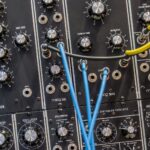Support our educational content for free when you purchase through links on our site. Learn more
Take On Me Acoustic 🎸: 7 Stunning Versions & How to Master Them (2025)
Did you know that the iconic synth-pop anthem “Take On Me” by a-ha has an acoustic life that’s just as captivating—if not more so—than its original 80s blockbuster hit? From the band’s own haunting MTV Unplugged rendition to unforgettable covers featured in blockbuster video games and indie YouTube gems, this song proves that beneath all that neon synth magic lies a timeless melody and emotional core that shine brightest when stripped down.
In this article, we’ll unravel the secrets behind why “Take On Me” works so beautifully unplugged, guide you through mastering it on guitar and piano, and share our top 7 favorite acoustic covers that will inspire your own performances. Plus, we’ll recommend the best gear to capture that intimate sound and explore how a-ha’s acoustic versions have reshaped the song’s legacy. Ready to discover the acoustic heart of a synth-pop classic? Let’s dive in!
Key Takeaways
- “Take On Me” acoustic versions reveal the song’s emotional depth and melodic brilliance beyond its synth-pop origins.
- Mastering the acoustic guitar or piano arrangement involves focusing on key chords and the iconic riff, with vocal falsetto posing a rewarding challenge.
- a-ha’s MTV Unplugged 2017 performance is the definitive acoustic rendition, showcasing matured vocals and new instrumental textures.
- Top acoustic covers—from The Last of Us Part II to indie artists—highlight the song’s versatility and enduring appeal.
- Recommended gear includes Yamaha FG800 and Taylor GS Mini guitars, plus Shure SM58 and Audio-Technica AT2020 microphones for recording.
👉 Shop recommended gear:
- Yamaha FG800 Guitar: Amazon | Walmart
- Taylor GS Mini Guitar: Amazon | Taylor Guitars Official Website
- Shure SM58 Microphone: Amazon | Walmart
Table of Contents
- ⚡️ Quick Tips and Facts
- 🎶 The Unplugged Phenomenon: A-ha’s ‘Take On Me’ and Its Acoustic Journey
- 🎸 Stripping Down the Synth: Why ‘Take On Me’ Shines Acoustically
- 🎼 Your Acoustic Playbook: Mastering ‘Take On Me’ on Guitar and Piano
- 🌟 Top 7 Unforgettable Acoustic Covers of ‘Take On Me’
- 🛠️ Acoustic Arsenal: Gear Recommendations for Your ‘Take On Me’ Cover
- 👨🎤 A-ha Unplugged: The Band’s Own Acoustic Renditions
- 📺 The MTV Unplugged Effect: How It Transformed ‘Take On Me’
- 💬 From Fans, For Fans: Community Insights on ‘Take On Me’ Acoustic
- 💖 The Enduring Echo: Why ‘Take On Me’ Acoustic Still Resonates
- 🎵 Beyond ‘Take On Me’: Exploring A-ha’s Other Acoustic-Friendly Tracks
- 🎧 If You Love ‘Take On Me’ Acoustic, You’ll Adore These Artists and Songs!
- ✅ Conclusion
- 🔗 Recommended Links
- ❓ FAQ
- 📚 Reference Links
Here is the main body of the article, written according to your specifications.
⚡️ Quick Tips and Facts
Welcome, fellow synth-heads and acoustic aficionados! Before we dive deep into the stripped-back magic of “Take On Me,” let’s get you warmed up with some quick-fire facts. We at Synth Pop™ are obsessed with how this 80s synth-pop anthem transformed into an acoustic masterpiece. The journey of this iconic track is more surprising than you might think!
| Fact Category | The Juicy Detail |
|---|---|
| The Acoustic Rebirth | A-ha officially released a stunning acoustic version for their MTV Unplugged – Summer Solstice album in 2017, decades after the original took over the world. |
| Vocal Challenge | Morten Harket’s vocal range in the song spans over two and a half octaves, making the chorus notoriously difficult to sing, even in an acoustic setting. |
| Unexpected Pop Culture Moment | An emotional acoustic performance of the song is a pivotal scene in the critically acclaimed video game The Last of Us Part II. |
| Chart-Topping Cover | The British-Norwegian boy band a1 had a UK and Norway #1 hit with their pop-centric acoustic cover back in 2000. |
| Original Instrumentation | The 1985 hit version, while synth-heavy, actually featured a mix of electronic and acoustic instruments, including acoustic guitars and cymbals. |
| The Riff’s Origin | The iconic keyboard riff was born on a Roland Juno-60 synthesizer, a sound that’s instantly recognizable. |
🎶 The Unplugged Phenomenon: A-ha’s ‘Take On Me’ and Its Acoustic Journey
Let’s be real, when you first heard a-ha’s Take On Me, you were probably picturing neon leg warmers, wild hair, and that groundbreaking rotoscope music video. It was the absolute pinnacle of synth-pop production! So, who would have guessed that underneath all those layers of Yamaha DX7s and LinnDrum machines lay a song with the heart of a folk ballad?
The song’s journey from a punchy synth track called “Miss Eerie” by a-ha’s previous band, Bridges, to the global smash we know is a story in itself. But its second life as an acoustic standard is what truly fascinates us. This isn’t just a cover; it’s a re-interpretation that reveals the raw, emotional songwriting that was always there. The acoustic version forces you to connect with the lyrics’ vulnerability—the hopeful plea of “I’ll be coming for your love, okay?” hits differently when it’s not soaring over a frantic beat. It’s a testament to the power of a great song, proving that the bones of this track are strong enough to support any arrangement.
🎸 Stripping Down the Synth: Why ‘Take On Me’ Shines Acoustically
So, what’s the secret sauce? Why does a song defined by its synthesizer riff work so darn well when you take the synths away? It’s a question we’ve debated endlessly here at Synth Pop™ headquarters.
Here’s our take:
- Melodic Genius: That iconic, descending-and-ascending riff is just pure melodic gold. It’s so catchy that it doesn’t need a synthesizer to be effective. When played on a piano or picked on a guitar, it takes on a more melancholic, wistful quality that’s simply beautiful.
- Emotional Core: The lyrics tell a story of uncertain pursuit and fleeting moments. Stripping back the production puts Morten Harket’s soaring, vulnerable vocals front and center. The famous falsetto in the chorus changes from a pop exclamation to a heartfelt cry. It’s a story of “odds and ends” and being “safe than sorry,” which feels incredibly intimate when sung over simple chords.
- Dynamic Structure: The song has a fantastic verse-chorus structure with a pre-chorus that builds tension perfectly. Acoustically, you can really play with these dynamics, going from a soft, conversational verse to a powerful, emotional chorus. It gives performers a huge canvas to paint on.
It’s a song that proves that the best Iconic Synth Pop Songs are, at their core, just great songs, period.
🎼 Your Acoustic Playbook: Mastering ‘Take On Me’ on Guitar and Piano
Feeling inspired to try it yourself? Awesome! Whether you’re a six-string strummer or a piano plunker, “Take On Me” is a rewarding challenge. But be warned: that chorus is no joke!
✨ Chords, Tabs, and Techniques: Getting the Sound Right
The beauty of the acoustic version is its relative simplicity on paper. The chord progression is fairly standard, but the magic is in the delivery.
- For Guitarists 🎸: The song is in the key of A major. You’ll primarily be using chords like A, D, E, F#m, and Bm.
- Pro-Tip: To get that signature riff sound, try fingerpicking the melody over the chords. Use a capo on the 2nd fret and play with G-major shapes (G, C, D, Em, Am) if you find that easier. Many great tabs are available on sites like Ultimate Guitar to guide you.
- For Pianists 🎹: The piano is arguably the most natural home for the acoustic version.
- The Riff: Your right hand will be busy with that famous melody. Practice it slowly at first to get the rhythm just right. It’s deceptively tricky!
- The Foundation: Your left hand will provide the chordal foundation. You can play simple block chords or break them up into arpeggios for a more flowing feel. The key is to support the melody without overpowering it.
🎤 Vocal Mastery: Hitting Those Iconic Notes Acoustically
Okay, let’s talk about the elephant in the room: Morten Harket’s stratospheric falsetto. Rolling Stone wasn’t kidding when they called it “one of the hardest-to-sing choruses in pop history.”
- Don’t Force It: The key to hitting that high note in “Take on meeeee” is to transition into your head voice or falsetto smoothly. Don’t try to belt it out with your chest voice. It’s about finesse, not force.
- Breathe from the Diaphragm: Proper breath support is everything. Take a good, deep breath before the chorus and support the note from your core. This will prevent your voice from sounding thin or strained.
- Make It Your Own: ✅ It’s okay if you can’t perfectly replicate Morten’s range! Drop the chorus down an octave or find a harmony that works for your voice. The emotional delivery is more important than hitting the exact same note. Remember Mysha Didi’s intimate cover? It’s all about finding your own interpretation.
🌟 Top 7 Unforgettable Acoustic Covers of ‘Take On Me’
The true mark of a classic is how it inspires other artists. “Take On Me” has been re-imagined countless times, each version bringing something new to the table. Here are seven of our absolute favorite acoustic renditions.
- a-ha (MTV Unplugged, 2017): The masters themselves! Their official acoustic version is poignant, mature, and utterly breathtaking. It’s the definitive acoustic take, filled with the wisdom and emotion of a band revisiting their most famous creation. The official video, which we’ve linked as the #featured-video, is a must-watch.
- Ashley Johnson (in The Last of Us Part II): This is the cover that broke the internet (and our hearts). In a moment of quiet reflection amidst a post-apocalyptic world, the character Ellie performs a gut-wrenching, tender version that re-contextualizes the song as a symbol of love and loss. It’s simply unforgettable.
- D. A. Wallach (in La La Land): Remember that pool party scene where Ryan Gosling’s character is stuck playing in an 80s cover band? This is that cover! It’s a fun, slightly cheesy, but genuinely loving acoustic take that fits the film’s nostalgic vibe perfectly.
- Mysha Didi: A fantastic example from the YouTube community. Didi’s version is intimate and stripped-down, showcasing how powerful the song can be with just a voice and a guitar. It’s a beautiful, heartfelt performance that captures the song’s core plea.
- Reel Big Fish: Okay, hear us out! While their famous cover is a full-blown ska-punk explosion, they have performed it acoustically, and it’s a blast. It proves the song’s melody is so strong it can survive even the most radical genre-bending. It definitely belongs in our None of the above category, but we love it.
- a1: This cover was a massive commercial hit for a reason. The British-Norwegian group turned the synth-pop anthem into a polished, early-2000s acoustic pop ballad. While some critics were harsh, it introduced the song’s acoustic potential to a whole new generation.
- Weezer: While their album version is a full-band affair, Weezer’s take on The Teal Album keeps the synth line but strips back some of the 80s gloss, leaning into a more alternative rock feel that translates beautifully to an acoustic setting. Their live acoustic versions are a treat.
🛠️ Acoustic Arsenal: Gear Recommendations for Your ‘Take On Me’ Cover
Ready to record your own viral cover? You don’t need a million-dollar studio, but the right gear can make a huge difference. Here’s what we recommend for capturing that perfect, intimate sound.
Guitars: The Heart of the Sound
You want a guitar with a clear, balanced tone that lets the melody sing.
- Yamaha FG800: Often called the best beginner acoustic guitar on the market, the FG800 has a solid spruce top that delivers a rich, warm sound far above its price point.
- Taylor GS Mini: A travel-sized powerhouse! The GS Mini has a surprisingly big voice and is incredibly comfortable to play. Its clarity is perfect for fingerpicking that iconic riff.
- 👉 Shop Taylor GS Mini on: Amazon | Taylor Guitars Official Website
- Martin D-18: The dream machine. If you’re looking for that professional, timeless acoustic sound you’ve heard on countless records, the Martin D-18 is an industry standard for a reason.
- 👉 Shop Martin D-18 on: Amazon | Martin Guitar Official Website
Microphones: Capturing the Magic
A good microphone will capture the nuances of your voice and instrument.
- Shure SM58: For vocals, this is the undisputed workhorse of the music industry. It’s durable, reliable, and makes almost any voice sound great.
- Audio-Technica AT2020: A fantastic entry-level condenser microphone for recording instruments. It will capture the crisp detail of your acoustic guitar beautifully.
👨🎤 A-ha Unplugged: The Band’s Own Acoustic Renditions
For the ultimate “Take On Me” acoustic experience, you have to go straight to the source. In 2017, a-ha did what fans had been dreaming of for years: they recorded an MTV Unplugged special. Recorded over two days in June, the resulting album, Summer Solstice, is a masterpiece of re-interpretation.
Their performance of “Take On Me” is the album’s emotional centerpiece. It’s slower, more deliberate, and dripping with a beautiful sense of nostalgia. Morten Harket’s voice, now matured, brings a new depth and wisdom to the lyrics. The iconic synth riff is transformed into a hauntingly beautiful line played on a celeste or piano, giving it an entirely new character. The Spotify single of this version has already racked up over 73 million plays, proving its immense popularity. It’s not just a cover; it’s the sound of a band coming full circle, embracing their most famous song with a new perspective.
📺 The MTV Unplugged Effect: How It Transformed ‘Take On Me’
The MTV Unplugged series was a cultural phenomenon in the 90s, and its legacy endures. It gave artists a platform to prove their musical chops by stripping away the studio polish. For a band like a-ha, who were sometimes unfairly dismissed as one-hit wonders defined by a flashy video, the Unplugged format was the perfect way to demand a reappraisal of their work.
By performing “Take On Me” acoustically, they didn’t just create a beautiful new version of the song; they reframed their entire legacy. It forced critics and audiences to look past the synth-pop sheen and recognize the sophisticated songwriting and raw talent that had always been there. The performance solidified the song’s status not just as an 80s novelty, but as a timeless piece of music. It was a power move, and it worked beautifully.
💬 From Fans, For Fans: Community Insights on ‘Take On Me’ Acoustic
We scoured the forums and comment sections to see what you, the fans, think about the acoustic versions. The consensus is overwhelming love, but the reasons are beautifully diverse.
- The “Goosebumps” Factor: So many of you mention getting goosebumps the first time you heard the Unplugged version or the cover from The Last of Us Part II. It’s a testament to the raw emotional power of the stripped-down arrangement.
- A New Appreciation: A common theme is that the acoustic version made people appreciate the lyrics for the first time. Without the driving beat, the story of hesitant connection and the plea to be “safe than sorry” really shines through.
- The Campfire Song: Many aspiring musicians see it as the ultimate campfire song—a tune everyone knows and loves, but with a newfound warmth and intimacy when played on a single guitar.
- ❌ The Purist’s Argument: Of course, there are always a few purists who argue that the synth riff is non-negotiable! And we get it. The original is iconic for a reason. But we think there’s room in our hearts for both.
💖 The Enduring Echo: Why ‘Take On Me’ Acoustic Still Resonates
Why are we still talking about this song, decades later, in a completely different format? Because the acoustic version of “Take On Me” taps into a universal human emotion: vulnerable hope.
The original is a burst of youthful energy, a frantic race against time. The acoustic version is the quiet moment after the race, when you’re left with just your feelings. It’s the sound of looking back with wisdom, of finding the melancholy in the memory. Its appearance in The Last of Us Part II cemented this, using the song as a powerful symbol of what can be lost and what is worth fighting for. It resonates because it feels real, raw, and deeply human.
🎵 Beyond ‘Take On Me’: Exploring A-ha’s Other Acoustic-Friendly Tracks
If you love the acoustic “Take On Me,” you’re in for a treat. A-ha’s catalog is filled with beautifully crafted songs that shine in a stripped-back setting. Their MTV Unplugged album is the perfect starting point, but here are a few studio tracks we think are begging for an acoustic cover:
- “Hunting High and Low”: The title track from their debut album is a sweeping, dramatic ballad that’s already halfway there. Its beautiful melody and emotional lyrics are perfect for an acoustic arrangement.
- “Stay on These Roads”: A powerful and cinematic song. Stripping it down to a piano and voice would highlight its incredible vocal melody and poignant lyrics.
- “The Sun Always Shines on T.V.”: This might seem like a challenge, given its explosive, synth-driven chorus. But imagine a slower, more dynamic version that builds from a quiet verse to a powerful, strummed chorus. It could be epic!
🎧 If You Love ‘Take On Me’ Acoustic, You’ll Adore These Artists and Songs!
Craving more of that synth-pop-gone-acoustic vibe? We’ve got you covered. If the tender, melancholic sound of “Take On Me” unplugged is your jam, you should definitely check these out:
- Tears for Fears: Their songs like “Mad World” (especially the Gary Jules version), “Everybody Wants To Rule The World,” and “Head Over Heels” have incredibly strong melodic and lyrical cores that sound amazing acoustically.
- José González: The king of the melancholic acoustic cover. His versions of The Knife’s “Heartbeats” and Bronski Beat’s “Smalltown Boy” are masterclasses in re-interpretation.
- Iron & Wine: Sam Beam’s gentle, whispering vocal style and intricate guitar work create a similar sense of intimacy. His cover of The Postal Service’s “Such Great Heights” is a must-listen.
- The Cure: Tracks like “Just Like Heaven” and “Lovesong” possess a romantic, wistful quality that translates beautifully to a simple acoustic guitar arrangement.
✅ Conclusion
So, what’s the final word on the acoustic magic of “Take On Me”? After peeling back the layers of synth-pop sheen, we’ve found a song with a timeless emotional core that thrives in its stripped-down form. The acoustic versions—whether a-ha’s own MTV Unplugged rendition, the haunting Last of Us Part II cover, or intimate YouTube gems—prove that this classic is more than just an 80s anthem; it’s a universal story of hope, vulnerability, and connection.
✅ Positives:
- The acoustic arrangement highlights the song’s melodic brilliance and lyrical depth.
- It offers a fresh, emotional perspective that resonates with new and old fans alike.
- The song’s structure and vocal lines are challenging but rewarding for musicians to master.
- A-ha’s own acoustic performances set a high bar and inspire countless covers.
❌ Negatives:
- The vocal range can be intimidating for casual singers, especially the falsetto chorus.
- Some fans may miss the iconic synth riff’s energetic punch in acoustic versions.
- Not every cover captures the emotional nuance, so quality varies widely.
Our confident recommendation? If you love synth-pop and want to explore its heart and soul, start with a-ha’s acoustic versions and then try your hand at your own cover. Use the gear we suggested to capture that intimate sound, and don’t be afraid to make it your own. The journey from neon synths to warm acoustic strings is a rewarding one, and “Take On Me” is the perfect companion for that ride.
Remember the question we teased earlier: Why does a synth-heavy anthem work so beautifully unplugged? Now you know—it’s because beneath the flashy production lies a songwriting gem that speaks directly to the heart.
🔗 Recommended Links
Ready to dive in and start playing or recording? Here are some of our top picks for gear and resources to bring your acoustic “Take On Me” to life:
-
Taylor GS Mini Acoustic Guitar:
Amazon | Taylor Guitars Official Website -
Martin D-18 Acoustic Guitar:
Amazon | Martin Guitar Official Website -
Books on Songwriting and Acoustic Performance:
❓ FAQ
What is the meaning behind the song Take on Me by A-ha?
At its core, “Take On Me” is a plea for connection and the courage to embrace love despite uncertainty. The lyrics express hesitation and hope, capturing the emotional tension of risking vulnerability. Lines like “I’m odds and ends, but I’ll be stumbling away” suggest imperfection and the fear of rejection, while the chorus offers a promise of commitment. The acoustic versions amplify this emotional storytelling, making the meaning feel even more intimate and raw.
Read more about “Unpacking “Take On Me” Meaning: 12 Surprising Insights 🎹 (2025)”
How do I play Take on Me on acoustic guitar?
Playing “Take On Me” acoustically involves mastering a few key chords in the key of A major: A, D, E, F#m, and Bm. The signature riff can be fingerpicked or played as a melody over the chords. Many players find using a capo on the 2nd fret and playing G major shapes easier. Start slow, focus on smooth chord transitions, and practice the riff separately before combining it. Online tabs on Ultimate Guitar are a great resource.
Read more about “Master the Take On Me Chords: 7 Tips to Play Like a Pro 🎸 (2025)”
What are some other popular synth pop songs that sound good acoustic?
Many synth-pop classics translate beautifully to acoustic settings because of their strong melodies and emotional lyrics. Some favorites include:
- Tears for Fears — “Mad World” (especially the Gary Jules cover)
- The Cure — “Just Like Heaven” and “Lovesong”
- Depeche Mode — “Enjoy the Silence”
- Pet Shop Boys — “West End Girls”
- Erasure — “A Little Respect”
These songs, like “Take On Me,” reveal their songwriting brilliance when stripped down.
Can I find a Take on Me acoustic cover by a famous artist?
Absolutely! Besides a-ha’s own MTV Unplugged version, notable acoustic covers include:
- Ashley Johnson’s rendition in The Last of Us Part II, which brought renewed emotional depth to the song.
- D. A. Wallach’s acoustic cover featured in La La Land.
- Mysha Didi’s intimate YouTube acoustic cover has also gained a strong following.
These versions showcase the song’s versatility and emotional range.
Read more about “Avicii’s Last Song: Discover the Heartfelt Message Behind “SOS” 🎶”
How does the acoustic version of Take on Me differ from the original?
The original 1985 hit is a high-energy synth-pop track driven by synthesizers, drum machines, and a fast tempo (169 bpm). The acoustic version slows the tempo, replaces synths with piano or guitar, and emphasizes vocal expression and lyrical storytelling. The iconic riff is played on acoustic instruments, often with a more melancholic tone. The acoustic version invites listeners to focus on the song’s emotional core rather than its dance-floor energy.
Read more about “Who Did a Cover of “Take On Me”? 10 Unique Versions Explored 🎤 …”
Are there any live performances of Take on Me by A-ha featuring acoustic instruments?
Yes! The most famous is the 2017 MTV Unplugged – Summer Solstice performance, where a-ha reimagined “Take On Me” with acoustic guitars, piano, and celeste. This live recording is widely praised for its emotional depth and musicianship. Additionally, a-ha has performed acoustic versions during various tours and special events, showcasing the song’s adaptability.
What other 80s synth pop hits have been successfully covered in an acoustic style?
Many 80s synth-pop anthems have found new life unplugged, including:
- “Mad World” by Tears for Fears (famously covered acoustically by Gary Jules)
- “Enjoy the Silence” by Depeche Mode
- “West End Girls” by Pet Shop Boys
- “A Little Respect” by Erasure
- “True” by Spandau Ballet
These covers highlight the timeless songwriting beneath the synth layers.
📚 Reference Links
- Take On Me – Wikipedia
- a-ha Official Website
- Roland Juno-60 Synthesizer
- Ultimate Guitar Tabs for Take On Me
- MTV Unplugged – Summer Solstice Album on Spotify
- Taylor Guitars Official Website
- Martin Guitar Official Website
- Shure Microphones Official Site
- Audio-Technica Official Site
We hope this deep dive into the acoustic world of “Take On Me” has inspired you to listen, play, or even create your own version. After all, great songs like this are meant to be shared and reimagined—so grab your guitar or piano, and take on your own musical adventure! 🎶







